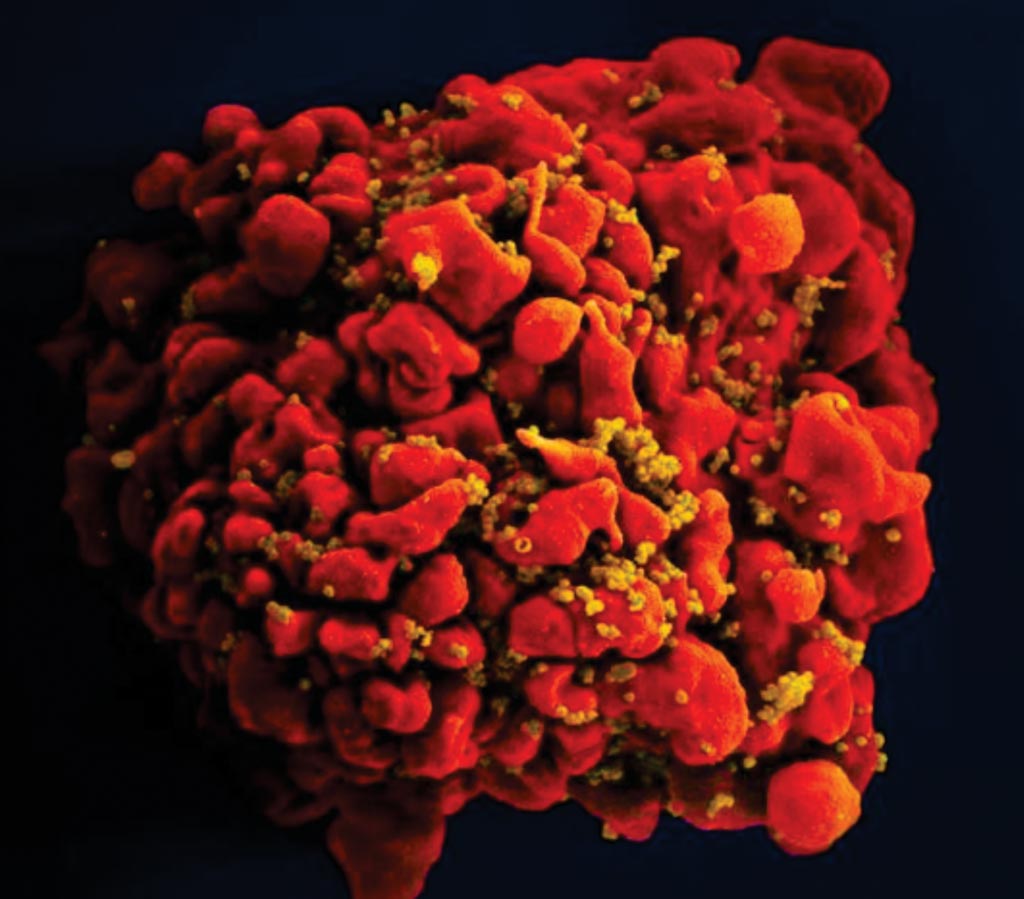Hematologic Abnormalities Found in HIV-Infected Children
By LabMedica International staff writers
Posted on 22 Aug 2017
In both antiretroviral-treated and untreated individuals, different types of hematological abnormalities have been documented, the most important being pancytopenia. These changes are related with increased risk of morbidity and mortality.Posted on 22 Aug 2017
Anemia is a common finding in patients with human immunodeficiency viral (HIV) infection and it is more prevalent in patients with advanced retroviral infection. Its prevalence ranges from 11.7% to 92% depending on the stage of HIV disease, sex, age, pregnancy status, and presence of opportunistic infections (OIs).

Image: A digitally colorized scanning electron micrograph of a T cell infected by numerous, spheroid-shaped, mustard-colored human immunodeficiency virus (HIV) particles, which can be seen attached to the cell\'s surface membrane (Photo courtesy of the US National Institute of Allergy and Infectious Diseases).
Scientists at the University of Gondar (Ethiopia) conducted a cross-sectional study was conducted from June 1 to August 30, 2015 on 222 HIV-infected children. All children less than15 years of age who took antiretroviral therapy (ART) for more than six months were considered for inclusion in the study. Anemia, neutropenia and thrombocytopenia were defined based on World Health Organization (WHO, Geneva, Switzerland) grading of hematologic toxicity. Accordingly, anemia was defined as hemoglobin (Hgb) concentration equal to or less than 10.5 g/dL for all children and further severity was also classified. Neutropenia was defined as absolute neutrophil count (ANC) of less than 1,500/mm3, and any increased severity further classified.
The investigators reported that the median age of study subjects was 10 years and 74.3% of the study subjects received ART for more than a year. The median of CD4 count before ART was 490 cells/mm3 and this increased to 663 cells/ mm3 after ART. The median of hemoglobin before ART was 11.5 mg/dL which increased after ART to 13 mg/dL and the prevalence of anemia was 42.8% before and 18.9% after ART initiation. The median of absolute neutrophil count before ART was 3×103/mm3 and after ART remained practically almost unchanged. Thrombocytopenia was observed in 8.1% of the study patients and decreased to 1.8% after treatment with ARV drugs.
The authors concluded that anemia was the top abnormality identified, followed by thrombocytopenia and leukopenia and after ART initiation, and there was a significant improvement of the hematologic profile among the pediatric population studied. The study was published on August 4, 2017, in the Journal of Blood Medicine.
Related Links:
University of Gondar
World Health Organization










 (3) (1).png)


